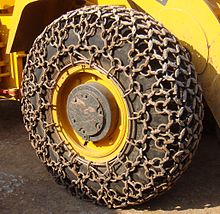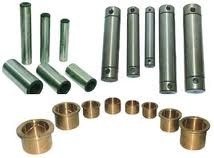- نیاز به پشتیبانی دارید؟
- 09131175244 و 09135667353
- 031-37887450
- info@toseerah.com
لودر توسعه راه

ماشین آلات راهسازی-بلدوزر توسعه راه
2019/08/28
H لینک،بازو،ملخی،لینک پشت باکت بیل مکانیکی توسعه راه
2019/08/29ماشین الات راهسازی-لودر:

A loader is a heavy equipment machine used in construction to move aside or load materials such as asphalt, demolition debris, dirt, snow, feed, gravel, logs, raw minerals, recycled material, rock, sand, woodchips, etc. into or onto another type of machinery (such as a dump truck, conveyor belt, feed-hopper, or railroad car). There are many types of loader, which, depending on design and application, are called by various names, including bucket loader, front loader, front-end loader, payloader, scoop, shovel, skip loader, wheel loader, or skid-steer.
A loader is a type of tractor, usually wheeled, sometimes on tracks, that has a front-mounted square wide bucket connected to the end of two booms (arms) to scoop up loose material from the ground, such as dirt, sand or gravel, and move it from one place to another without pushing the material across the ground. A loader is commonly used to move a stockpiled material from ground level and deposit it into an awaiting dump truck or into an open trench excavation.
The loader assembly may be a removable attachment or permanently mounted. Often the bucket can be replaced with other devices or tools—for example, many can mount forks to lift heavy pallets or shipping containers, and a hydraulically opening “clamshell” bucket allows a loader to act as a light dozer or scraper. The bucket can also be augmented with devices like a bale grappler for handling large bales of hay or straw.
Large loaders, such as the Kawasaki 95ZV-2, John Deere 844K, ACR 700K Compact Wheel Loader, Caterpillar 950H, Volvo L120E, Case 921E, or Hitachi ZW310 usually have only a front bucket and are called front loaders, whereas small loader tractors are often also equipped with a small backhoe and are called backhoe loaders or loader backhoes or JCBs, after the company that first claimed to have invented them. Other companies like CASE in America and Whitlock in the UK had been manufacturing excavator loaders well before JCB.
The largest loader in the world is LeTourneau L-2350. Currently these large loaders are in production in the Longview, Texas facility. The L-2350 uses a diesel-electric propulsion system similar to that used in a locomotive. Each rubber tired wheel is driven by its own independent electric motor.
Loaders are used mainly for loading materials into trucks, laying pipe, clearing rubble, and digging. A loader is not the most efficient machine for digging as it cannot dig very deep below the level of its wheels, like a backhoe or an excavator can. The capacity of a loader bucket can be anywhere from 0.5 to 36 m3[1] depending upon the size of the machine and its application. The front loader’s bucket capacity is generally much bigger than a bucket capacity of a backhoe loader.
Unlike most bulldozers, most loaders are wheeled and not tracked, although track loaders are common. They are successful where sharp-edged materials in construction debris would damage rubber wheels, or where the ground is soft and muddy. Wheels provide better mobility and speed and do not damage paved roads as much as tracks, but provide less traction.
In construction areas loaders are also used to transport building materials – such as bricks, pipe, metal bars, and digging tools – over short distances.
Front-loaders are commonly used to remove snow especially from sidewalks, parking lots, and other areas too small for using snowplows and other heavy equipment. They are sometimes used as snowplows with a snowplow attachment but commonly have a bucket or snow basket, which can also be used to load snow into the rear compartment of a snowplow or dump truck.
High-tip buckets are suitable for light materials such as chip, peat and light gravel and when the bucket is emptied from a height.
Unlike backhoes or standard tractors fitted with a front bucket, many large loaders do not use automotive steering mechanisms. Instead, they steer by a hydraulically actuated pivot point set exactly between the front and rear axles. This is referred to as “articulated steering” and allows the front axle to be solid, allowing it to carry
توسعه راه عرضه کننده ی انواع قطعات یدکی لودر




